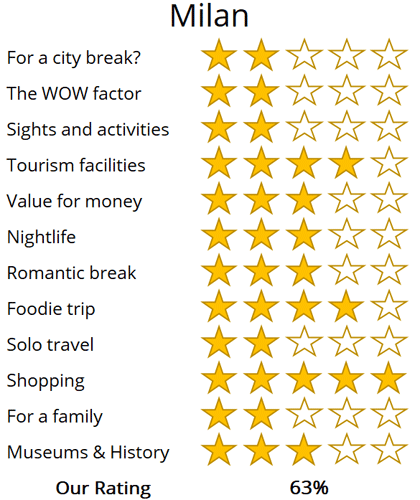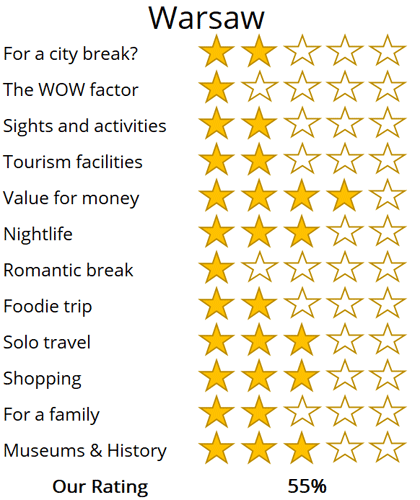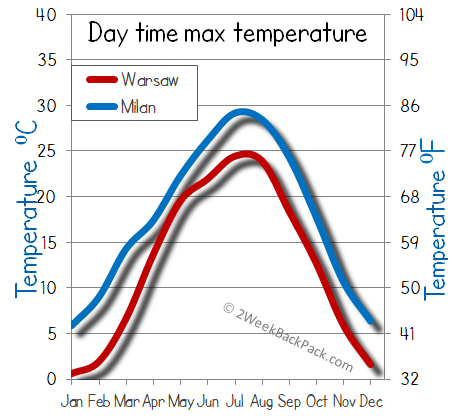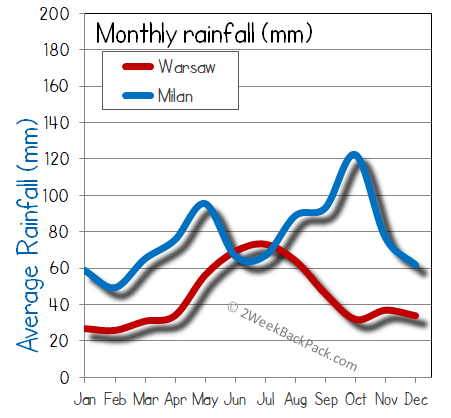WhereToGoForMyHoliday.com
The best destination comparison site!
WhereToGoForMyHoliday.com
The best destination comparison site!
Warsaw or Milan, which is better for your holiday in 2024?
Warsaw and Milan both offer unique and enticing experiences, but which one should you choose for your city break or holiday?
We recognise the difficulty in making this decision. While there is abundant information available on both destinations, clear guidance on which city better aligns with your travel preferences is often hard to find.
This article aims to provide an impartial comparison of Milan and Warsaw, and hopefully help you to choose the best city to visit.
The article is structured into several sections, each of which can be directly accessed through the following links:
• Introduction to the cities
• Scores and ratings
• Which one should I, friends, or family visit?
• When to visit and weather
• Who is the city suited for?
• The perfect 48hours (with map)
• Tourism details (where to stay? airport details?)
Introduction to Milan and Warsaw
Warsaw is a vibrant city that seamlessly blends the old with the new, offering a mix of historical sites and modern attractions.
This Polish capital is a city of contrasts. On one hand, you have futuristic shopping centres, and on the other, a Soviet-era skyscraper dominating the skyline. The Old Town, with its medieval appearance, is actually a meticulous reconstruction post-World War II.
It's this variety that makes Warsaw so intriguing. Whether you’re taking a romantic stroll through Łazienki Park, learning about the anti-Nazi uprisings, admiring Polish art in national galleries, or exploring the trendy Mokotow district, there’s always something new to discover.
Milan, synonymous with fashion and luxury shopping, is a city where appearances matter, and even its main tourist attraction, the Galleria, is a shopping arcade. While the historic centre is home to high-end boutiques and designer stores, the city’s more creative and edgy districts can be found on the outskirts.
Visitors should be aware that Milan that Milan does not have the breadth of monuments and standout tourist attractions as of other Italian cities. This is primarily a business focused city, which reveres in sophistication and looking good.

The gothic Duomo in central Milan – a highlight is the view from the roof

The historic centre of Warsaw
High-level summary for Warsaw and Milan
Summary
Where would I journey for a personal escape?
Warsaw
Where would I send my parents for a memorable visit?
Milan
Where's the ideal destination for my adventurous 19-year-old cousin?
Warsaw
Where should my food-obsessed friend indulge their culinary passions?
Milan
Note: The above comparisons are weather-independent and are based on travel during the most opportune times of the year. Details about the ideal travel seasons are elaborated upon later in this article.
In the sections that follow, you'll find a comprehensive comparison between these two fascinating cities. This includes recommendations on the duration of stay, the best times to visit, and tailored 48-hour itineraries for each city.
The final segment delves into practicalities for your travels, such as the best airport to fly into, the optimal districts for your accommodation, and insider tips, for when you come to explore the city.
We hope that you find all of this information useful, in planning your next exciting trip!
Destination details
How long to spend each city?
The main sights of Milan can be easily seen in a single day of sightseeing.
A second day allows time to explore the more atmospheric districts (Navigli, Zona Tortona) or provides extra time for shopping.
To capture the essence of the city, you need to experience the early evening drinks culture and the evening strolls where everyone wears their finest clothes. Milan may lack many tourist sights, but there surrounding region certain compensates with many enjoyable day trips.
This includes the historic towns of Bergamo, Brescia and Pavia, the beautiful lakes of Garda, Maggiore and Como, plus the Italian Alps. It is even possible to visit Verona as a day trip.
Warsaw can be done quickly. Just a couple days is all you'll need to see the Old Town, the Palace of Culture and Science, the grand parks, and the main museums.
Of course, if you've got extra time to spare, Warsaw will always be able to fill it. Once you've checked off the main attractions, there are stacks of more local sights, eateries, and activities to get stuck into. They include café hopping down in hipster Mokotow, tasting ethnic foods in multicultural Praga, and even day outings to the Kampinos Forest or the post-industrial city of Łódź.

The Naviglio Grande canal runs through the heart of the Naviglio district

The Park Royal Baths Park (Łazienki Królewskie) is the largest park in Warsaw and a great location for a summers day
For the real Milan experience, you want to visit during the summer or winter fashion weeks (Sep/Oct or Feb/Mar), to mingle with models, stylish and Aficionados.
For a city break, Milan is almost year-round, but it is cool and possibly wet in the winter, while in hot August most residents head to the beach for the whole month.
One of the quirks of Milan is at the weekends, most of its affluent or mobile residents leave the city for the coast (summer), the Alps (winter) or lakes (Spring/Autumn), leaving the city to tourists and foreign shoppers.
If you don't want to wrap yourself up in cotton wool and thermals every time you step outside, it might be best to avoid the winter months in Warsaw. From November to December, below-zero temperatures are normal in the Polish capital, along with icy rain, sleet and snow.
Most locals often say that spring and early autumn are the sweet spots. While summer's warm, it can often be humid, and there's no beach or ocean nearby to help you cool off. Months like April and May see milder days and cool nights, while September is prime time to wander the famous parks of Warsaw, as the trees begin to change colour and glow orange, ochre and yellow.
Warsaw captivates those who appreciate lively, bustling capital cities. While the Old Town is stunning, it's not the main attraction. Instead, expect to spend your time exploring vibrant and authentic neighborhoods, filled with a variety of dining options from fusion to fine dining. Discover craft beer on guided tours and enjoy artisan breakfasts in quirky cafes.
On the other hand, Warsaw offers a deeply immersive historical experience. The Warsaw Uprising Museum and the POLIN exhibitions provide insightful introductions to the challenges faced by the Polish people and Polish Jews during Nazi occupation. Don't miss the 800,000 exhibits at the renowned National Museum, and take time to explore grand parks, complete with Chinese gardens and monuments dedicated to Chopin.
If you have a passion for fashion, a flair for style, and are willing to indulge in a premium experience, Milan is your destination. The city stands out for its high-end designer shopping, trendsetting fashion, and its overall chic aesthetic.
However, some visitors may find Milan less captivating compared to the grandeur of Rome, the cultural richness of Florence, or the picturesque scenes of Venice. Milan is predominantly a business hub, where the hardworking ethos of its inhabitants is reflected in its cutting-edge fashion and refined nightlife.
Insight: There are few historic buildings in Milan, as many were destroyed by the extensive bombing of the second world war.

The distinctive Castello Sforzesco castle in Milan

The gothic Saint Florian's Cathedral in Warsaw
48 hours in Milan
The interactive map below shows a suggested tour for 48hours in Milan. The first day is shown in green and the second day is marked in yellow.
Day 1: Start your first day at Piazza del Duomo, the vibrant heart of Milan. This square is home to the stunning Gothic Duomo di Milano cathedral (be sure to visit the roof for spectacular views) and the elegant Galleria shopping complex, which houses a range of boutiques and high-end retailers. On the other side, you'll find the Palazzo Marino and the prestigious Teatro alla Scala.
In the afternoon, take time to explore the area around the Sforza Castle and Parco Sempione. Make sure to visit the Santa Maria delle Grazie convent, where you can admire the renowned “The Last Supper” fresco. Later, explore the fashionable Brera district, known for its blend of luxury stores and stylish residents.
Early evening is when Milan truly comes alive. As the workday ends, locals flock to bars for Apericena (a happy hour accompanied by a light buffet), where they enjoy fine cocktails and showcase the latest fashion trends. The Navigli district is an excellent spot to immerse yourself in this contemporary cultural tradition.

The Santa Maria delle Grazie convent, the location of one of the most controversial religious paints….
Day 2: For your second day, take a stroll from the Duomo, along the lively Via Torino, and continue onto Corso di Porta Ticinese, passing the impressive Basilica San Lorenzo Maggiore before entering the vibrant Navigli district. This canal-lined quarter brims with artisanal shops, trendy bars, and is a popular haunt for the city's youthful population.
The canals and train lines mark the boundary between Navigli and Zona Tortona, a district that has transformed from its gritty past to become Milan's hub of design and creativity. Today, designers breathe new life into former warehouses, creating the latest fashion trends. The area is subtly cool and epitomises the determination and fervour of Milan's residents.
For football enthusiasts, a tour of the iconic San Siro stadium is a must on your second day in the city.
Related articles: 48 hours in Milan

San Siro stadium, home to two of Italy’ greatest football teams
48hours in Warsaw
This perfect first 48 hours offers a fun-filled and exciting introduction to life in the Polish capital. It's a cocktail of wartime history, art, and – of course – good old Slavic beer.
Day 1: Hit the Old Town of Warsaw as early as you can. That way, you'll avoid the crowds, and – on a sunny day – get to catch the gilded medieval-style frontispieces in some perfect photography light. You certainly won't want to miss a moment on grand Plac Zamkowy (Castle Square).
The Royal Castle that gives it the name is the star of the show, with its orange-tinged exteriors and Baroque domes. It, like the whole rest of the Old Town, is actually deceptively new. The entire district had to be rebuilt from ruins in the wake of WWII.
Wait for the folk from the Free Walking Tour under Zygmunt's Column. Their two-hour odyssey through this part of the capital really digs down into the unique mosaic of architecture. After that's done, you can hit Nowy Swiat and follow the route Polish monarchs once took in and out of the city. It's now a buzzing modern thoroughfare with dumpling taverns and beer halls (perfect for lunch).
Follow it all the way south and hop a few more blocks and you'll soon be in Łazienki Park. It's an icon of the metropolis. An evening stroll here could start with a vision of the huge Chopin statue and end with a sighting of the Classicist Temple of Diana. For dinner, where better than hipster Mokotow? The district has everything from Tex-Mex to stylish sushi bars.

The Warsaw Barbican (barbakan warszawski) dates from 1540, and was part of the fortifications that encircle the city
Day 2: A selfie stop outside of the iconic Palace of Culture and Science starts day two with a bout of Soviet architecture. A 237-metre spire of a building, it was a personal gift to Poland by one Joseph Stalin. From there, a few trams stops can whisk you over to the Warsaw Uprising Museum. The enthralling exhibits of that showcase the heroic efforts of Poland's underground resistance during the fight against the Nazis.
Afterwards, make straight for the riverside and the leafy Vistula Boulevards. They're a hubbub of life in the summer months. Dog walkers meet buskers and street entertainers right by the water. (An optional drop into the family-friendly Copernicus Science Centre is a great addition if the rain's a-pouring). For the evening, hip and elegant Praga awaits. That's arguably Warsaw's most stylish area, with Lebanese kitchens giving way to bohemian bars and cool coffee shops.

The striking Palace of Culture, standing at 237m is the tallest building in Poland
Public transport in Warsaw means trams and buses. The network of more than 260 combined lines can take you virtually anywhere you want to go.
What's more – it's cheap! Just 3,4 PLN can get you from A to B on any route, but there are also 24- and 72-hour tickets that won't break the bank. You can get them at machines located at the stops, or in any kiosk dotted around town.

Saint Alexander’s Church was constructed in honour of the Russian tsar Alexander I
Warsaw has two international airports. There's the larger Warsaw Frederic Chopin Airport, which can be reached by direct train from Warsaw's main station on line S2 or S3. The smaller Warsaw Modlin International Airport is a hub for European low-cost carriers. To go from terminal to city from there, you can ride the private Modlinbus, or catch the loop train that goes to both airports and then Warszawa Centralna.
A big Polish presence and a welcoming local vibe means there's rarely trouble for tourists in WarsawPickpockets, angry bouncers in clubs, and the classic European taxi scammers are the most common frustrations beyond that. .
When it comes to picking a hotel, it's typically best to be on the western side of the Vistula River. Some of the very best accommodation choices hide amid the cobbled lanes and squares of the Old Town. Others sit within walking distance, by Mirow or the Palace of Culture and Science. Being on the far side of the river means finding some cool aparthotels in local's favourite Praga.
There are three airports for Milan; Linate (small dated, 7km to centre), Malpensa (main international airport, 50km from west of Milan) and Bergamo (Ryan air hub, 50km from north east of Milan). There is a bus from Bergamo to Milan (60minutes €6.00), train from Malpensa airport (50minutes €13.00) and from Linate just take a taxi (€12-15). There is no shortage of flights and departures to or from Milan, and fares, if booked far enough in advance, can be very cheap.
Milan has ample hotels and accommodation options, but these obviously need to be booked far in advance during the two fashion weeks. For your first visit you would want to be based close to the historic centre (Centro Storico) or for a more lively and authentic experience the Navigli district. For cheaper accommodation look to the Citta Studi, the main student area of the city. Milan has very good public transport, and is easy to travel around the city.

The Arco della Pace, in Milan
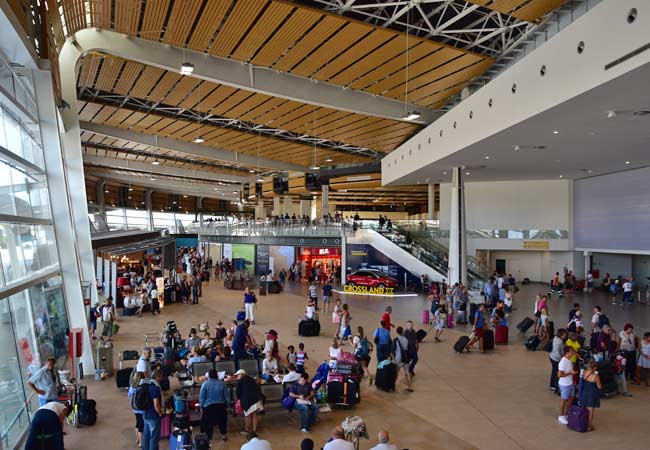
oh we were stuck in the airport!

Copenhagen was a bit expensive...

All we did was drink beer in Brussels...
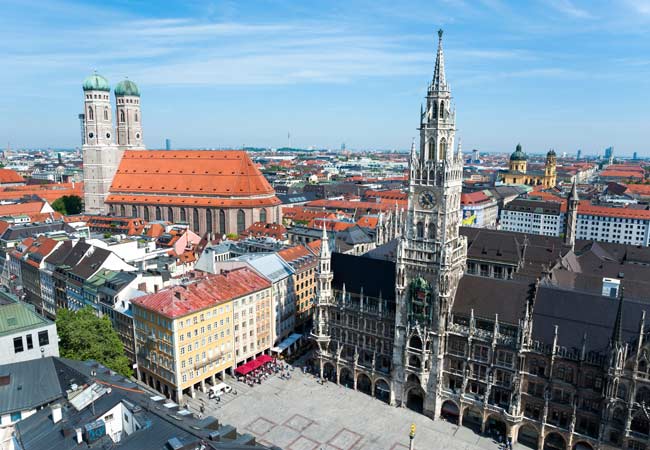
Muncih was crazy
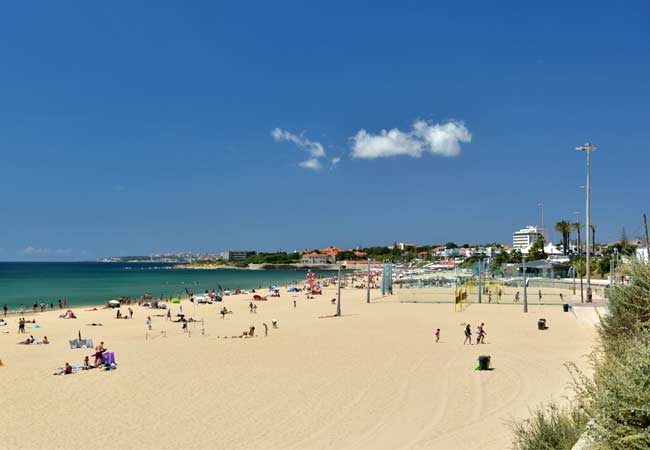
And we got so burnt!
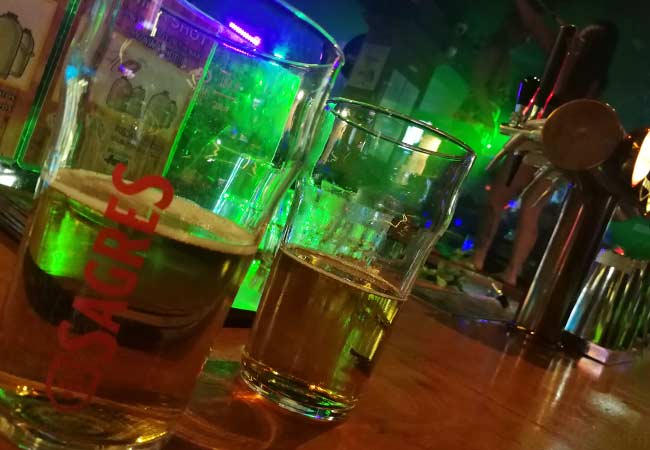
Remeber that night in Rome

oh we were stuck in the airport
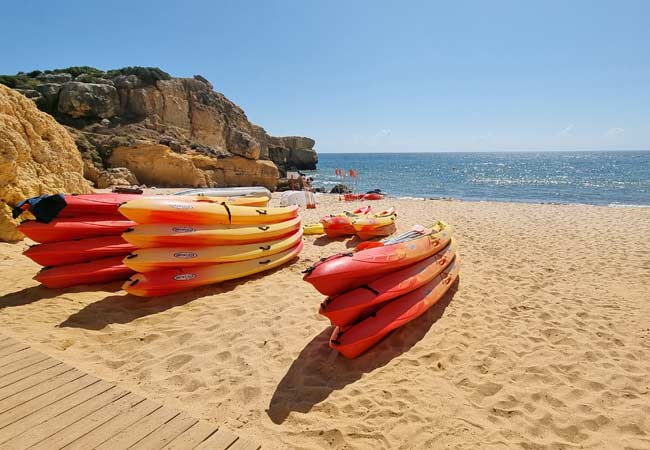
So much fun kayaking

Berlin and that group from Austria!

There was such a view from that church

And we got so burnt!

Munich was eventful, wasn't it!

Such a view from that cathedral in Florence
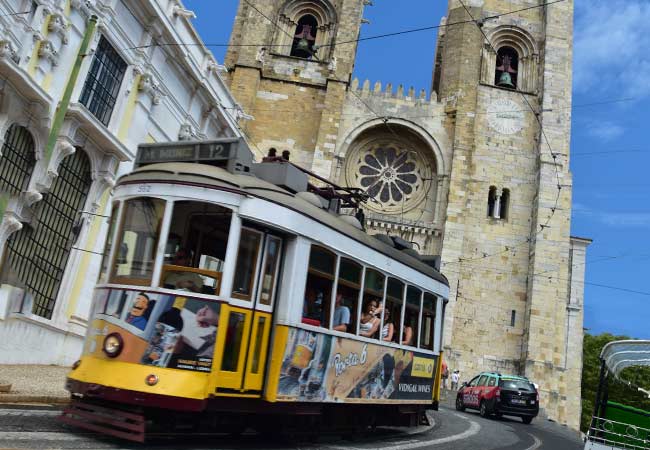
Lisbon was such so much fun

Last summer was so much fun .... x

Remeber that night in Rome

Lisbon was such so much fun

Such a view from that cathedral in Florence

Munich was eventful, wasn't it!

And we got so burnt!

Remeber that night in Rome

All we did was drink beer in Brussels...

Berlin and that group from Austria!

Can't wait to go back to Dubrovnik

Remember that boat ride in Prague

Copenhagen was a bit expensive...
